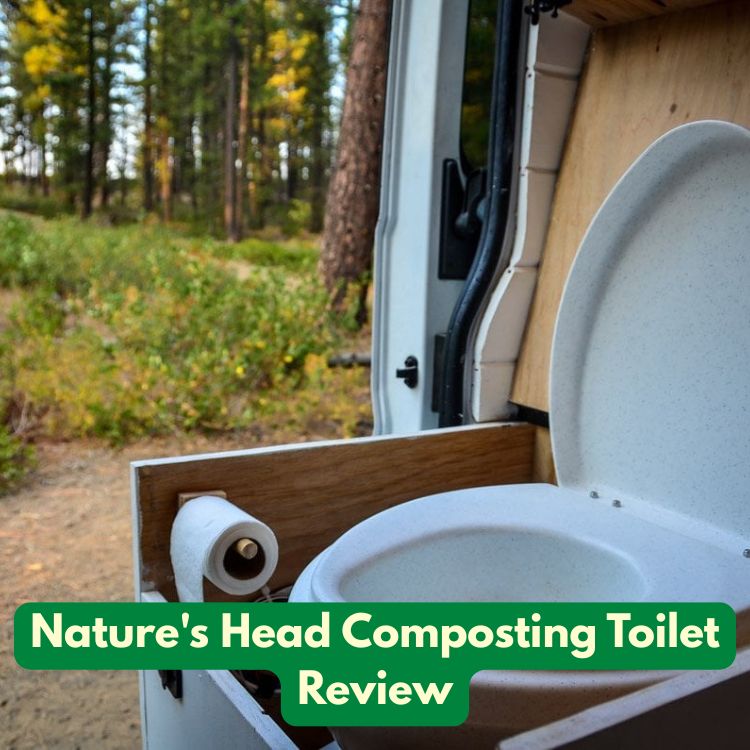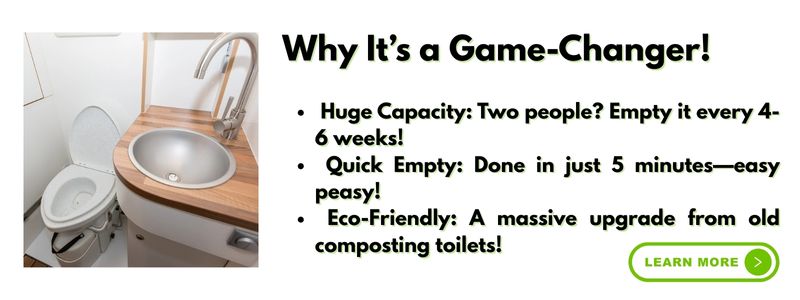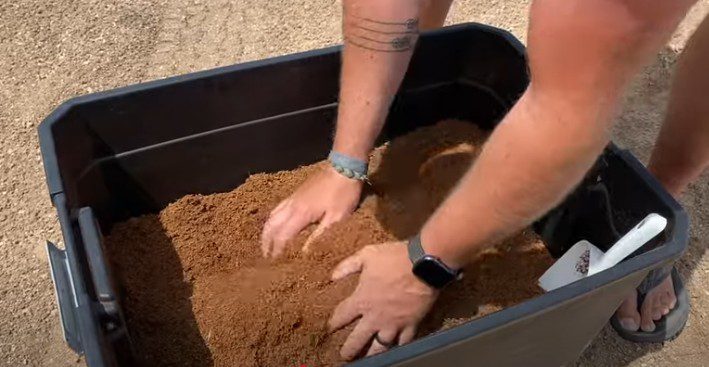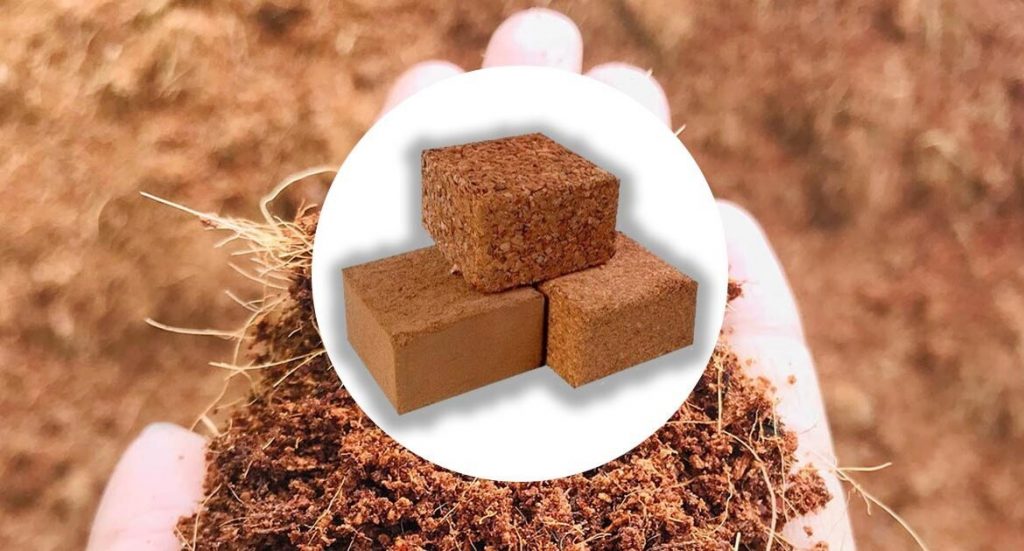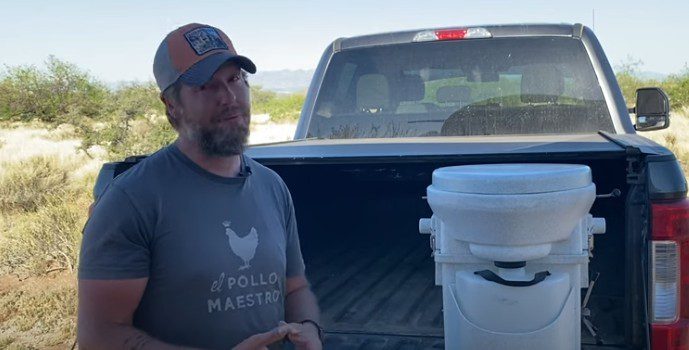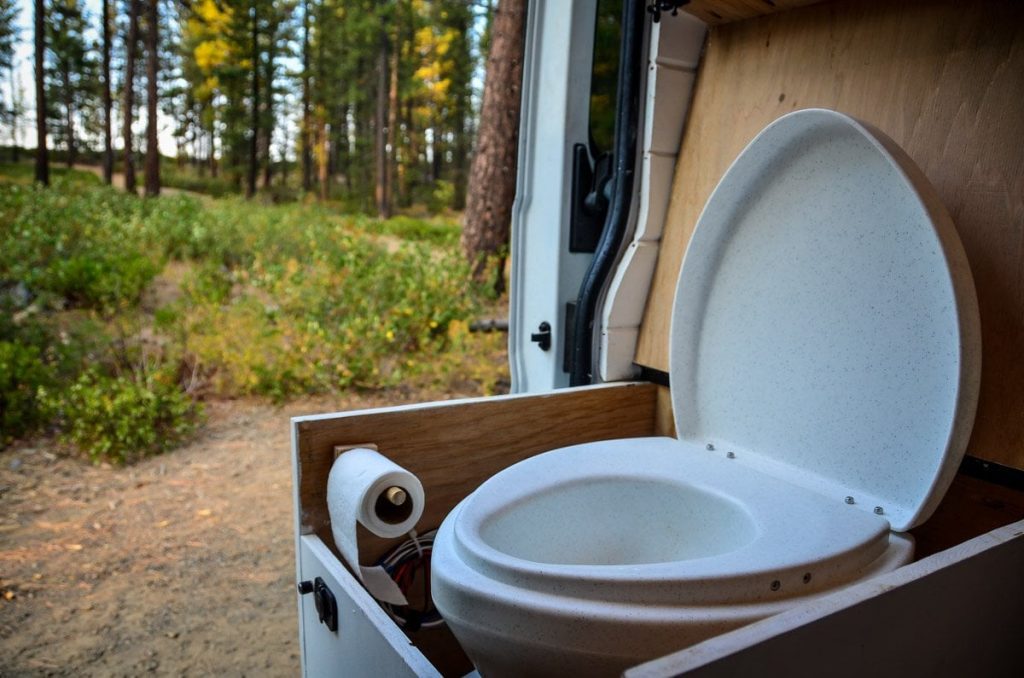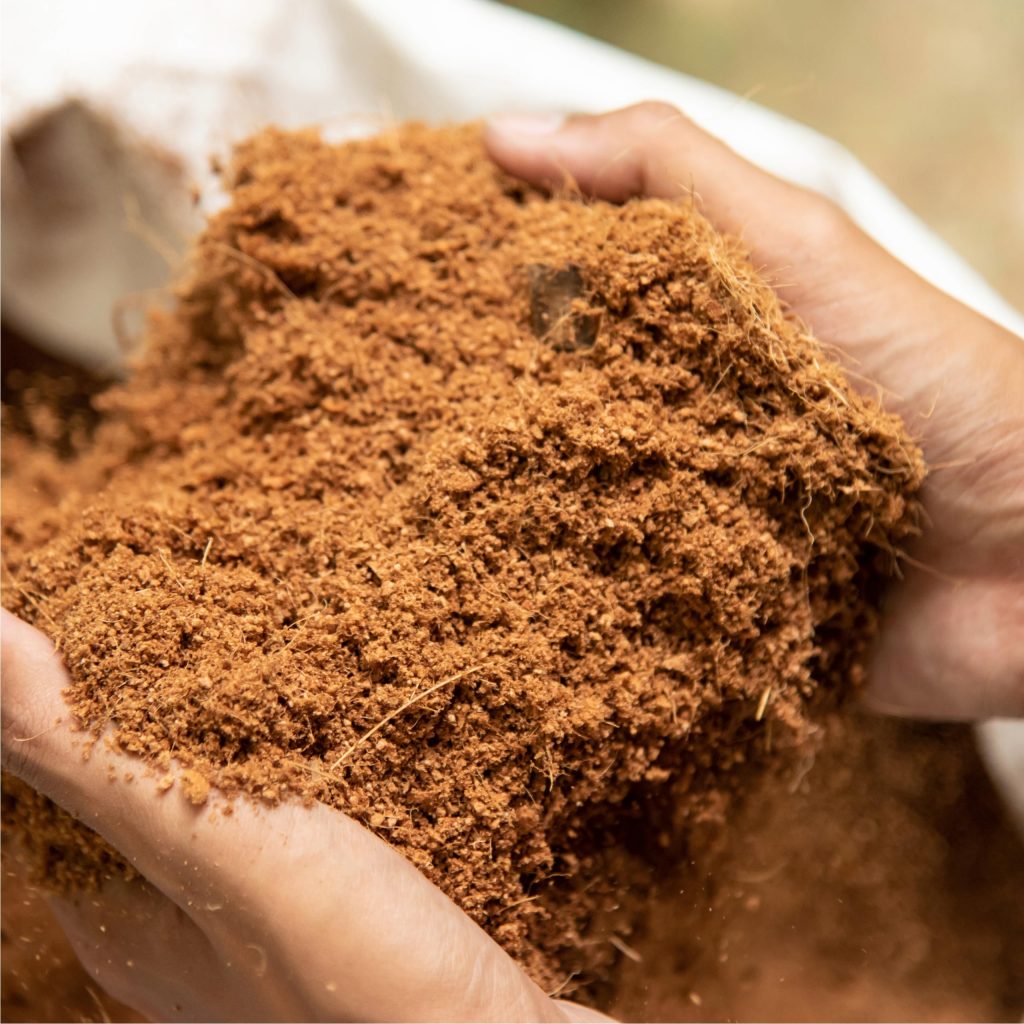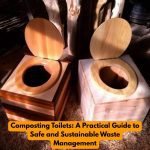Nature’s Head Composting Toilet Review: 3 Years, 6 People, Zero Regrets?
Ever wondered if you could ditch the dreaded black tank and embrace a life of toilet freedom? Jonathan from Tiny Shiny Home did, and he’s here to tell the tale!
After three years of full-time travel with a Nature’s Head Composting Toilet and a family of six, he’s ready to spill the beans (or, well, you know).
Get ready for an honest, quirky, and maybe slightly too detailed review of this eco-friendly throne.
Thinking about making the switch? Check out the Nature’s Head product page for more info. And while you’re at it, explore the Tiny Shiny Home website for more tips and tricks on tiny living!
How Does This Thing Actually Work?
Composting toilets aren’t as intimidating as they sound. The magic lies in separation. This toilet cleverly divides liquids (urine) from solids.
Why is this important? Because when they stay apart, they don’t turn into that other stuff nobody wants to deal with.
It’s like keeping your socks and sandals in separate drawers – a simple solution to a smelly problem.
The Solids Container and Its Best Friend: Coconut Coir
So, what do you put in the solids side? Not just anything! You need a composting agent. Jonathan swears by coconut coir.
You break it up, mix it with a little water until it’s about halfway full, and then add it to the solids container.
This isn’t just for show. The toilet has an agitator – a fancy term for a handle you turn that mixes everything up. It’s like a tiny dance party for your… you get the idea.
The “Composting” Misconception
Let’s clear something up: a composting toilet doesn’t fully compost your waste. Bummer, right? It starts the process.
Think of it as planting a seed, not harvesting a crop. You can’t just dump the contents into your garden and expect a tomato explosion. Instead, you put it in a compostable bag and toss it in the trash.
Landfills will take it from there, and the composting process will eventually complete.
Installation and Staying Fresh
Installation is surprisingly easy. If you’re replacing an existing toilet, the trickiest part is capping the old drain. Since the Nature’s Head doesn’t connect to a traditional tank, you’ll need to seal that off.
The only real installation involves a vent hose and a small fan that needs to vent to the outside. The unit itself simply bolts to the floor.
Ventilation: Your Nose’s New Best Friend
That little fan is a game-changer. It sucks air through the system, keeping things dry and odor-free.
Speaking of which, make sure you clean the filter on the fan and also make sure you don’t overtighten the screws when putting the fan back together or it may not work!
No one wants a smelly situation, so proper ventilation is key.
The Great Stink Showdown: Solids vs. Liquids
Here’s a surprise: the solids area isn’t that stinky! Thanks to the coconut coir, agitation, and ventilation, it’s actually quite mild.
The urine bucket, on the other hand… let’s just say it has character. The odor depends on what you drink. The more sugar, the more “aromatic” it gets.
Family of Six? Buckle Up!
The Nature’s Head is designed for two people. Jonathan’s family has six. This changes things. Dramatically.
The Daily Grind: Emptying the Urine Bucket
With six people contributing, the urine bucket fills daily. This means Jonathan has to find a dumping spot every single day. It’s a glamorous life, folks.
Solids Capacity: A Week or Two, Tops
The solids container lasts about a week or two for a family of six.
Compare that to a month or two for a couple, and you can see the difference. More people, more… well, you know.
Composting Speed: Slow and Steady (Sometimes)
The more frequently you fill the toilet, the slower the composting process. So, if you’re a large family, don’t expect rapid results.
Dumping 101: Where Does It All Go?
Let’s talk disposal.
Urine: Liquid Gold (Sort Of)
Whenever possible, Jonathan uses existing bathrooms or sewer connections to dump the urine. But when boondocking, he takes a different approach.
Diluted urine is actually a great fertilizer! He pours it on plants or bushes, making sure to distribute it and avoid creating puddles.
Always follow the lay of the land and dump in different spots each time.
Solids: Landfill Bound
In most states, it’s legal to toss the bagged solids in the trash. Double-check your local laws, just to be safe.
Jonathan argues that it’s no worse than a disposable diaper, and actually better because it’s composting.
Coconut Coir: The Prep Work
Jonathan buys coconut coir in big, compressed blocks. He stores it in a massive tub in the back of his truck. Because, you know, priorities.
Getting It Ready: Hydration is Key
To prepare the coir, he drops it in the bucket, sprays it with water, and lets it loosen up. Then, he uses an ice pick (or similar tool) to break it apart.
The goal? A fine, dirt-like consistency. Not too wet, or you’ll risk mold.
Lessons Learned: The Peat Moss Fiasco
Not everything goes according to plan. Jonathan once tried using peat moss in the solids area. Disaster struck.
It got moldy, wet, and generally gross. He now sticks to coconut coir.
Campground Commandments: Thou Shalt Use the Bathhouse
When in a campground, Jonathan enforces a strict “bathhouse only” policy. This avoids the hassle of dumping urine and solids in public.
Plus, it prevents awkward stares from fellow campers.
The Verdict: Pros and Cons
So, is a composting toilet worth it? Let’s weigh the options.
The Upsides
- No Black Tank: Freedom from the dreaded black tank!
- Fewer Dump Stations: Less time searching for dump stations, more time enjoying the scenery.
- More Grey Water Storage: Turning the black tank into a grey tank doubles your grey water capacity.
- No Poo Pyramid: Enough said.
The Downsides
- Daily Urine Dumping: Especially challenging for large families.
- Frequent Cleaning: Regular solids container changes and cleaning are a must.
- Campground Challenges: Not ideal if you spend most of your time in campgrounds.
The One Thing They’d Change
If Jonathan could do it again, he’d plumb the urine bucket into the grey tank. This would make disposal much easier.
Cleaning Time: The Nitty-Gritty (Without the Gross-Out)
Time for the part you’ve been waiting for: cleaning! Don’t worry, we’ll skip the gory details.
Preparation: Gear Up!
Jonathan sets the toilet up on his tailgate. He grabs paper towels, a trash bag, and an essential oil cleaner.
He also sets down some paper towels for the lid.
Lid Removal: Containment is Key
He carefully removes the lid and immediately covers the solids container with a compostable bag.
This prevents bugs from throwing a party inside.
Cleaning: Wipe It Down
He uses essential oil cleaner to wipe down all surfaces. Every other cleaning, he removes and cleans the filters on the fan assembly.
Dumping: The Grand Finale
Jonathan inverts the container into a trash bag or better still a compostable biodegradable bag, releasing air pressure. He may have to bang on it to dislodge any remaining solids.
He avoids using harsh chemicals inside to protect the beneficial bacteria.
Reassembly: Fresh Start
He adds fresh coconut coir to cover the agitator bar, re-installs the urine bucket and the lid. Then he cleans the surrounding area and reattaches the toilet to the floor.
Coconut Coir: Consistency is King
What should the coconut coir look like? Broken up, but not wet. Like fine dirt. Add enough to cover the agitator bar.
Just be prepared for a mess if it’s windy!
Straightforward Answers About the Nature’s Head Compost Toilet
What’s the deal with emptying the compost bin?
The solids bin fills up about every 3-4 weeks for two people using it full-time. Take it out, dump it into a compost bag or bin, and start fresh. No plumbing drama involved.
Does it really keep the smell away?
Yes, when used as directed, it stays surprisingly odor-free. The fan pulls air outside, and coconut coir or peat moss keeps things earthy, not nasty.
Can I use regular toilet paper?
Go for it! Standard paper breaks down just fine. Super-thick or plush paper might slow things down, so maybe skip the triple-ply.
What do I need to start using it?
Just the toilet, the supplied crank handle, and a power source for the fan (either 12V or 110V). Add coconut coir or peat moss to the solids bin, and you’re set.
How does the liquid separation work?
A divider in the seat separates liquids and solids. Pee goes up front into a removable bottle. Solids drop through the back hatch into the bin. No mixing, no mess.
How often do I need to empty the urine bottle?
Plan on every 2-3 days, depending on how many folks are using it. Neglect this chore and you’ll know it quick—trust your nose.
Can I install it in my camper, boat, or off-grid cabin?
Absolutely! It works great anywhere with good airflow for the exhaust. Just make sure you can vent it outdoors.
Any special cleaning tips?
Wipe the seat and exterior with a mild cleaner. Rinse the urine bottle with water, then add a splash of vinegar to keep things fresh. Don’t overthink it.
Is it hard to winterize?
Nope. Just empty both tanks before freezing temps hit. No pipes or tanks to burst means easy cold-weather care.
What happens if I sit and forget to close the trap door?
Not much. Just crank it a few extra turns after you’re done. It keeps the bin mix even and happy.
Can kids use it without a meltdown?
Yes. The seat’s sturdy and the instructions are simple. Show them where the trap handle is and which hole to aim for—young ones catch on fast.
Will compost attract bugs or critters?
Not if you vent it right and keep the area dry. Bugs don’t find much to love in properly aged compost.
How long does the compost take to finish?
Let it chill for a few more weeks after it leaves the bin. Nature needs time, but it pays off with rich, finished compost.
Need to add anything besides coconut coir or peat moss?
Stick to the basics. No kitchen scraps, no yard waste. Just coir or peat moss to keep it fluffy and low-odor.
Is there much to maintain?
Very little. Crank after each use, empty as needed, replace the vent filter every year or so. That’s about it.
Top Tip: Buy some great disposable compostable bags..check these out here in our article
Still Have Questions?
The Nature’s Head Composting Toilet isn’t perfect, but for Jonathan’s family, it’s been a worthwhile investment.
Got more questions about composting, the Nature’s Head toilet, or boondocking?
Leave a comment on the Tiny Shiny Home Facebook page or Instagram! And don’t forget to check out the Tiny Shiny Home website and their courses for more tips and tricks on tiny living.
Thanks for reading!

